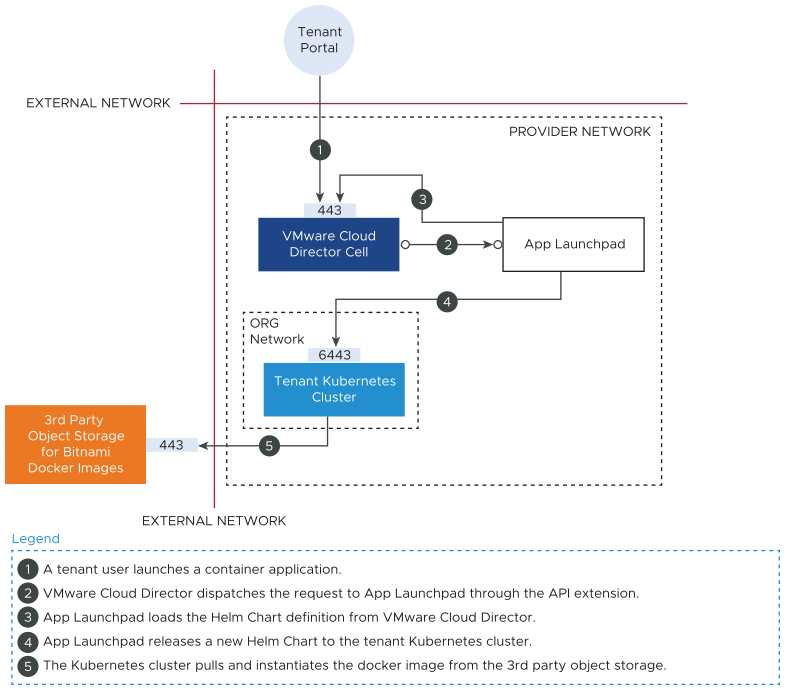Starting with App Launchpad, you can deploy container applications to a Kubernetes cluster.

Prerequisites
- Verify that you have the vApp User role or an equivalent set of rights assigned to your VMware Cloud Director user. For more information, see Predefined Roles and Their Rights.
- Verify that App Launchpad can access the tenant Kubernetes cluster.
- If the Kubernetes cluster is on VMware Tanzu™ Kubernetes™ Grid you need to perform additional configuration. You must allow App Launchpad to access the Kubernetes control plane node. See Add an SNAT or a DNAT Rule to an NSX-T Edge Gateway in the VMware Cloud Director Documentation.
- If the Kubernetes cluster is a Container Service Extension native cluster, verify that the cluster is deployed under a direct or routed network.
- If the Kubernetes cluster is a Container Service Extension native cluster, deployed under a routed network, verify that a specific NAT rule on the tenant Edge Gateway is configured for the control plane node of the cluster.
- Verify that the tenant Kubernetes cluster has outbound access to the third party Docker hub where the Bitnami docker images are stored.